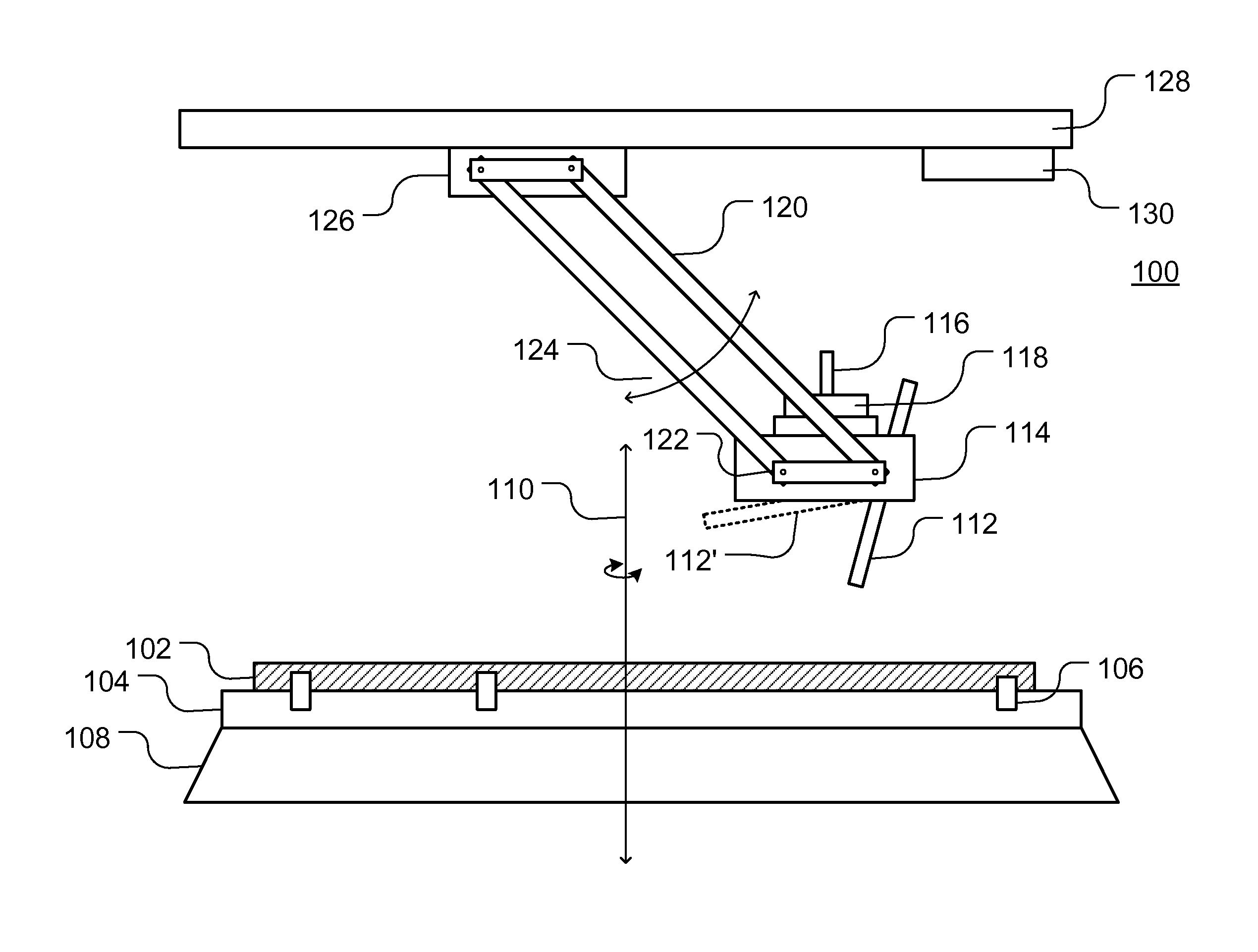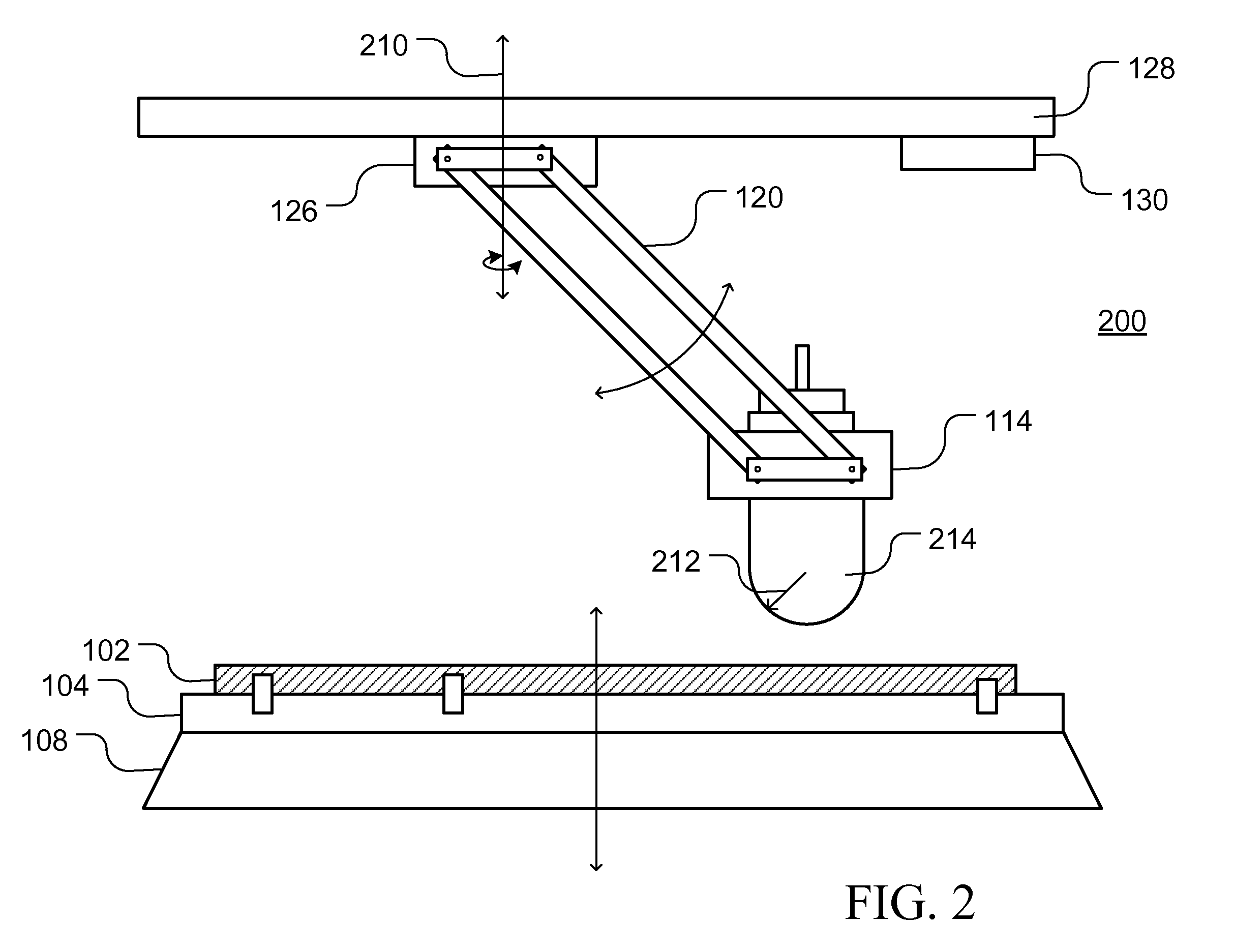Scratch Resistance Test Methods and Apparatus
a test method and scratch resistance technology, applied in the direction of measuring devices, investigating material hardness, instruments, etc., can solve problems such as mar type damage, damage commonly found on paint coats and dashboard surfaces, and testing parameters that do not accurately simulate damage modes
- Summary
- Abstract
- Description
- Claims
- Application Information
AI Technical Summary
Benefits of technology
Problems solved by technology
Method used
Image
Examples
Embodiment Construction
[0028]As will be appreciated by those in the art, polymeric materials have been incorporated into a wide range of products including, for example, vehicles, as both interior and exterior components. In light of the continued interest in reducing the weight, cost and assembly associated with a particular vehicle, the use of exterior polymeric panels and components that may be manufactured from a variety of materials including, for example, a variety of rigid plastics and extra rigid plastics may be used for external applications that would typically be expected to endure substantial contact events over the life of the part. Examples of such materials include, for example, acrylonitrile butadiene styrene (ABS), polycarbonate (PC), polypropylene (PP), sheet molded compound (SMC), fiberglass reinforced polyester (FRP), polycarbonate / acrylonitrile butadiene styrene (PC / ABS) compositions and Honda polymer alloy (HPA). The materials may be utilized in manufacturing a wide variety of automo...
PUM
 Login to View More
Login to View More Abstract
Description
Claims
Application Information
 Login to View More
Login to View More - R&D
- Intellectual Property
- Life Sciences
- Materials
- Tech Scout
- Unparalleled Data Quality
- Higher Quality Content
- 60% Fewer Hallucinations
Browse by: Latest US Patents, China's latest patents, Technical Efficacy Thesaurus, Application Domain, Technology Topic, Popular Technical Reports.
© 2025 PatSnap. All rights reserved.Legal|Privacy policy|Modern Slavery Act Transparency Statement|Sitemap|About US| Contact US: help@patsnap.com



